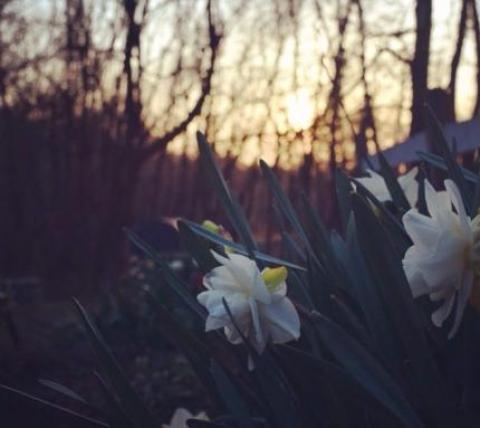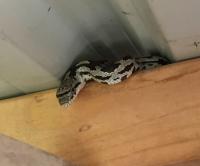
Children gambol on the gentle hillside between our houses where forsythia blooms. The fronds adorning the old willow stump are filling out, a green fountain. These are bright compositions of happiness and hope, the faithfulness of Earth greening once again. Yet for me they are splashed with other thoughts and emotions. Perhaps it is the times in which we live or, just as likely, my particular heartbreak, but there are moments when I crave a more mottled canvas. In The Seasons Book Parker Palmer writes
…there is a hard truth to be told: before spring becomes beautiful, it is plug ugly, nothing but mud and muck. I have walked in the early spring through fields that will suck your boots off, a world so wet and woeful it makes you yearn for the return of ice. But in that muddy mess, the conditions for rebirth are being created.
I love the fact that the word “humus”—the decayed vegetable matter that feeds the roots of plants—comes from the same word root that gives rise to the word “humility.” It is a blessed etymology. It helps me understand that the humiliating events of life, the events that leave “mud on my face” or that “make my name mud,” may create the fertile soil in which something new can grow.
I am kin at times to the Mud Clan, those whose faces are marked with a mix of dirt and tears. I am humbled by the insurmountable troubles of our planet, by the heart-rending sorrows befalling friends and loved ones, and by the personal brokenness with which I am confronted. I am in a mood to sit in the mud awhile, to let the moist earth seep around me, to be low and grounded.
I am drawn to the mucky, brown spring, still adorned with winter’s detritus: dull leaves on the soggy path, bare brambles, broken branches. In this universe it must be permissible to linger in these unlovely places, to allow the forest to reflect everything there is in this world, to grieve.
This may be why the Journey of the Heart, the walking meditation we do through the tangled and tawny wood and field on Good Friday, feels necessary to me. I need a good and unhurried lament.
Meanwhile something is hidden in the mud and decay, as Mary Oliver relates in this poem:
Out of the Stump Rot, Something
Out of the stump rot
something
glides forward
that is not a rope,
unless a rope has eyes,
lips,
tongue like a smack of smoke,
body without shoulders.
Thus: the black snake
floating
over the leaves
of the old year
and down to the pond,
to the green just beginning
to fuzzle out of the earth,
also, like smoke.
If you like a prettiness,
don’t come here.
Look at pictures instead,
or wait for the daffodils.
This is spring,
by the rattled pond, in the shambled woods,
as spring has always been
and always will be
no matter what we do
in the suburbs.
The matted fur,
the red blood,
the bats unshuttering
their terrible faces,
and black snake
gliding across the field
you think you own.
Long neck, long tail.
Tongue on fire.
Heart of stone.
 Here is a spring that can hold it all: the shambles, the rattled edges, and the grief. Gliding toward us is a darker, different, and possibly more real hope, alive all along in the rot, awakening now with the power to shake us from complacency and despair. Humus and human, it turns out, are woven together. We humans belong to the loamy, astonishing family of things, rising out of the earth like smoke. Activist and author Rebecca Solnit puts it, “hope…means coming to terms with the fact that we don’t know what will happen.”
Here is a spring that can hold it all: the shambles, the rattled edges, and the grief. Gliding toward us is a darker, different, and possibly more real hope, alive all along in the rot, awakening now with the power to shake us from complacency and despair. Humus and human, it turns out, are woven together. We humans belong to the loamy, astonishing family of things, rising out of the earth like smoke. Activist and author Rebecca Solnit puts it, “hope…means coming to terms with the fact that we don’t know what will happen.”
This is why at the other end of things, early on Sunday morning, we can and will light a fire in the stone ring by the Retreat House and gather there with our songs and drums and old stories, with all of who we are. We will shout and sing and beat our drums. This is spring. Anything can happen.